Want to create Google Ads that drive results? Here’s a breakdown of 10 successful campaigns from brands like Nike, Amazon, and Airbnb, showcasing how clear messaging, precise targeting, and strong visuals can boost conversions. These examples highlight strategies like retargeting, urgency-driven ads, personalized targeting, and more.
Key Takeaways:
- Nike: Retargets users with dynamic ads to re-engage cart abandoners.
- Amazon: Uses countdown timers and stock scarcity to push sales.
- Airbnb: Customizes ads for local preferences and search intent.
- Grammarly: Leverages ad extensions for higher click-through rates.
- Slack & Shopify: Focus on solution-based headlines and trial offers.
- Tesla: Creates urgency with limited-time pre-orders.
- Skillshare: Combines discounts with clear calls-to-action.
- Monday.com: Tests visuals like GIFs and infographics for better engagement.
Quick Comparison Table:
| Brand | Strategy | Key Feature | Impact |
|---|---|---|---|
| Nike | Retargeting | Personalized product ads | Re-engages users |
| Amazon | Urgency-Driven Ads | Countdown timers, stock updates | Boosts quick purchases |
| Airbnb | Location-Based Campaigns | Localized messaging | Increases relevance |
| Grammarly | Ad Extensions | Sitelinks, callouts | Higher click-through rates |
| Slack | Solution-Based Ads | Business-focused headlines | Improves engagement |
| Shopify | Trial Offer Ads | Free trials, targeted keywords | Lowers acquisition costs |
| Tesla | Limited-Time Pre-Orders | Scarcity messaging | Drives pre-order sales |
| Skillshare | Discount Ads | Time-sensitive offers | Attracts new users |
| Monday.com | Visual Testing | GIFs, infographics, screenshots | Boosts ad engagement |
These examples show how combining clear messaging, targeting, and testing can create ads that convert. Dive into the article to learn how these strategies work and how you can apply them to your campaigns.
Google Ads Ad Copy Best Practices for 2024
What Makes Google Ads Convert
High-performing Google Ads are built on a mix of clear messaging, precise targeting, and strong visuals. To drive conversions, several critical components work together to improve ad performance.
Catchy Headlines are essential to grab attention and match user intent. For example, MeUndies effectively uses targeted headlines to appeal to their audience [1].
Smart Keyword Choices lay the groundwork for successful campaigns. Here's how:
| Strategy | Benefit | Suggested Action |
|---|---|---|
| Search Term Analysis & Match Type Refinement | Improves relevance and Quality Score | Regularly review search terms and adjust match types |
| Negative Keywords | Cuts down on wasted ad spend | Exclude irrelevant searches that don't align with your goals |
Landing Page Quality plays a huge role in turning clicks into conversions. A good landing page aligns perfectly with the ad's promise, offering a smooth and relevant experience for users.
Ad Extensions can make a big difference by adding useful details. Grammarly, for instance, uses action-oriented extensions to guide users toward specific actions without overwhelming them [3].
Clear Calls-to-Action (CTAs) are non-negotiable. Phrases like "Apply Now" or "Claim Your Offer" motivate users to act immediately.
To get the most out of your ads, focus on improving Quality Scores, refining bids, and testing ad copy regularly through A/B testing. Advanced tools can also streamline campaign management. Resources like the Top PPC Marketing Directory offer solutions for bid management, keyword research, and performance tracking, helping advertisers make smarter, data-driven decisions.
Keep in mind, optimizing for conversions is an ongoing effort. Regularly analyze performance metrics to uncover areas for improvement and ensure your ads stay effective.
Now, let’s dive into some real-world examples of Google Ads that truly deliver results.
1. Nike: Customer Retargeting Results
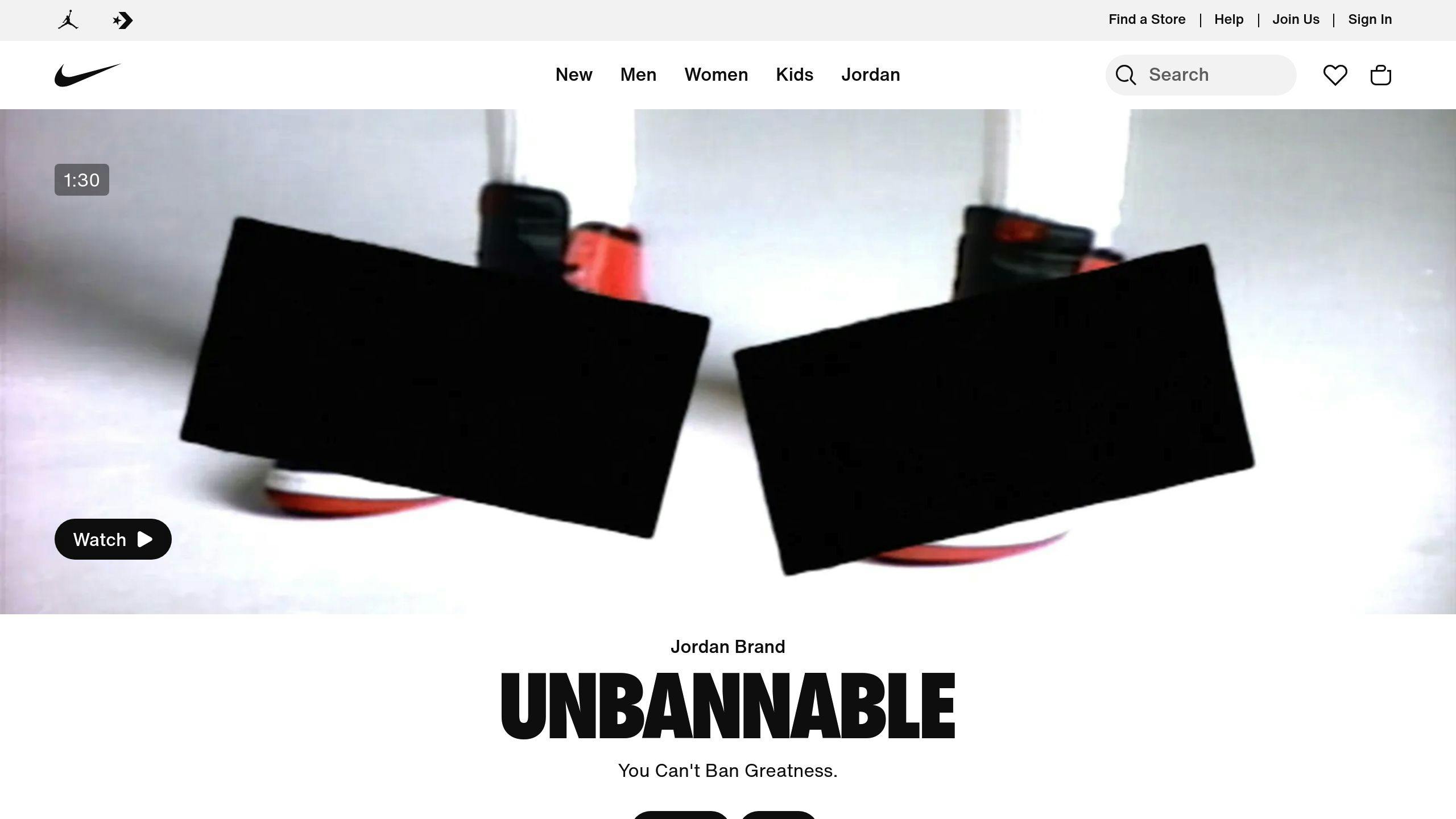
Nike has mastered the art of retargeting by using personalized ads to re-engage users based on their online behavior. With dynamic product ads, Nike reminds users of items they browsed but didn’t buy - like running shoes - across Google’s Display Network, which spans over 2 million websites.
Their strategy thrives on a well-thought-out segmentation approach that tailors ads to specific user actions:
| User Behavior | Retargeting Tactic | Ad Features |
|---|---|---|
| Product Viewers | Highlight previously viewed items | Product image + "Still thinking about these?" message |
| Cart Abandoners | Use urgency-driven messaging | Limited-time offers + abandoned products |
Nike also employs list-based retargeting, matching email addresses with user accounts to create highly targeted ads. Their display ads include scrollable recommendations based on what users previously interacted with, making it simple for customers to rediscover and buy products they showed interest in.
To keep potential buyers engaged without annoying them, Nike carefully manages how often ads appear and rotates them regularly. This ensures their retargeting efforts stay effective and relevant. As one expert puts it:
"The gist of what we're saying is that it's harder to get strangers to buy your stuff, than it is to remind people to buy your stuff."
For businesses aiming to replicate Nike’s approach, tools from the Top PPC Marketing Directory can help refine campaigns. Features like advanced bid management and ad copy testing ensure ads are targeted to the right people at the right time.
Nike’s strategy highlights how retargeting can bring back potential customers and boost sales in any industry.
2. Amazon: Product Ads with Time Limits
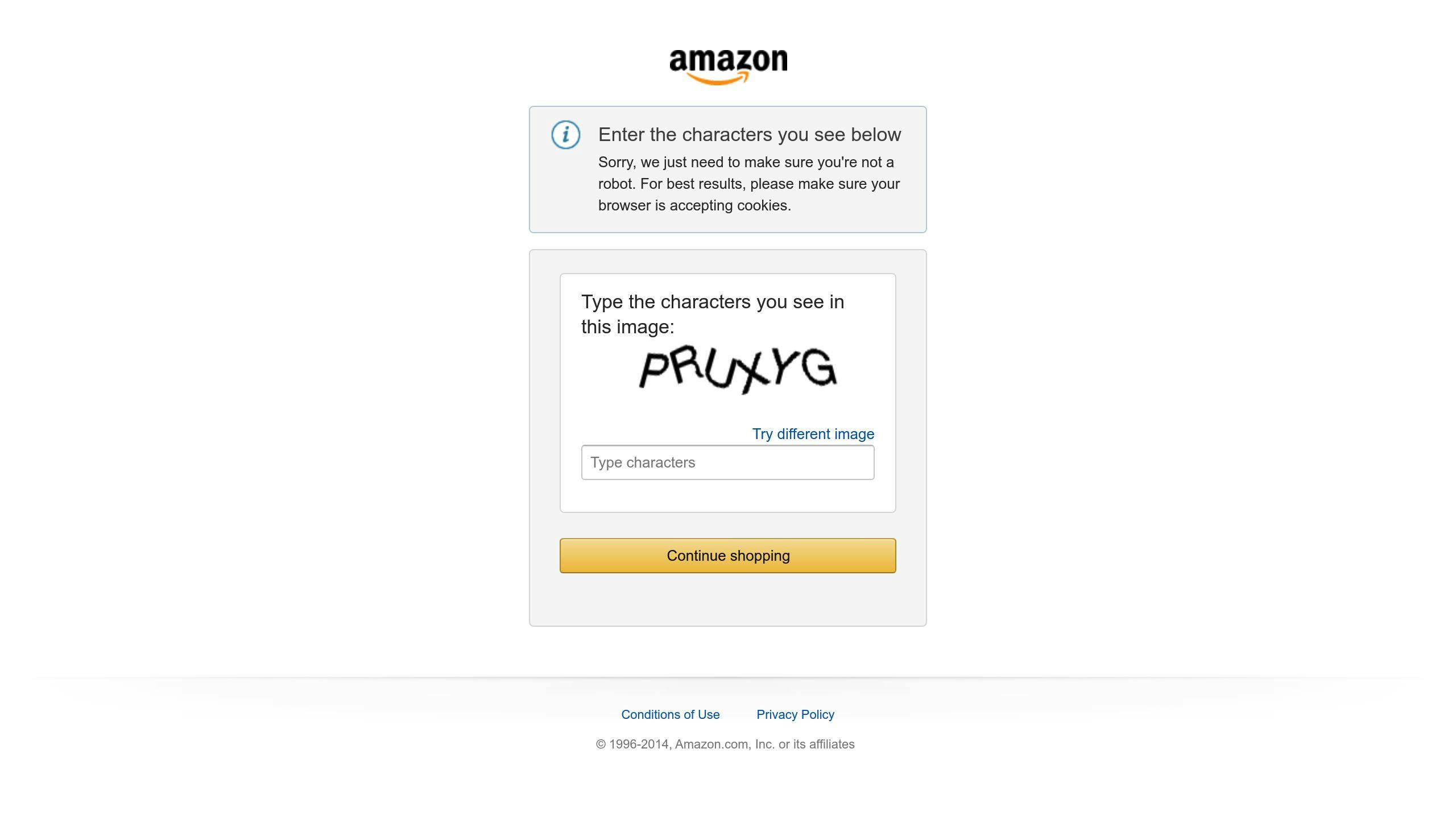
Amazon's approach to Google Ads shows how urgency and dynamic content can significantly boost conversions, setting a high standard in e-commerce advertising. By combining eye-catching product displays with time-sensitive messaging, they encourage quick action from potential buyers.
Dynamic countdown ads have proven incredibly effective, increasing return on ad spend (ROAS) by 422%, compared to 210% for static ads. This success relies on three main elements:
| Element | Purpose | Impact |
|---|---|---|
| Dynamic Countdown | Adds urgency and FOMO (fear of missing out) | Encourages immediate action |
| Stock Status | Shows inventory levels | Triggers a scarcity mindset |
| Price Benefits | Highlights discounts or deals | Reinforces the value of the offer |
One standout example is Amazon's Lightning Deals, which combine countdown timers with limited-time offers to create a sense of urgency and exclusivity. Maximilian Wühr from FINN explains:
"We find that switching away from generic CTAs like 'Sign up' creates a more emotional response, more clicks, and more conversions."
For new product launches, Amazon uses pre-order ads with limited-time offers, balancing exclusivity with urgency. These promotions are typically run within five days of the offer's expiration to maximize effectiveness while maintaining trust.
Amazon takes full advantage of Google's dynamic ad parameters to update inventory levels and countdown timers in real-time, ensuring their ads remain accurate and relevant. They also seamlessly align online and offline promotions. This strategy has increased their conversion rates from 3.5% to 10%, demonstrating its effectiveness.
If you're looking to adopt similar tactics, tools from the Top PPC Marketing Directory can help manage dynamic ad content and timing. The key is to create urgency without misleading your audience, offering real value that drives action.
Amazon's success highlights the impact of time-sensitive advertising, a strategy also embraced by brands like Airbnb in their location-specific campaigns.
3. Airbnb: Location-Based Ad Campaigns
Airbnb uses Google Ads with precise location targeting and personalized messages to connect traveler intent with highly relevant local content. This strategy has led to impressive conversion rates.
Their success relies on three main targeting strategies:
| Component | Strategy | Impact |
|---|---|---|
| Geographic Precision | Focus on users' search locations and destination interests | Increases relevance |
| Regional Customization | Tailor messages to match local preferences | Boosts engagement |
| Landing Page Relevance | Direct users to listings that match their searches | Improves conversions |
For example, in Japan, Airbnb noticed a preference for traditional aesthetics. Their ads highlighted properties with tatami flooring and minimalist designs, resonating well with local users.
In May 2024, Airbnb introduced the 'Icons' program, blending location-based targeting with unique experiences to further boost engagement.
Their data-driven strategy includes dynamic keyword adjustments, localized pricing messages, and content featuring local experiences. Operating in over 220 countries with more than 4 million hosts, Airbnb handles around 300 million bookings each year. In 2021, their North American revenue alone reached $23 billion.
Businesses aiming to replicate this approach can benefit from tools available in the Top PPC Marketing Directory to manage location-specific campaigns. The key is ensuring ad messages align with landing pages while addressing local market preferences.
This approach highlights the power of precise targeting and tailored messaging. Up next, we'll see how Grammarly applies similar principles with action-driven extension ads.
4. Grammarly: Action-Driven Extension Ads
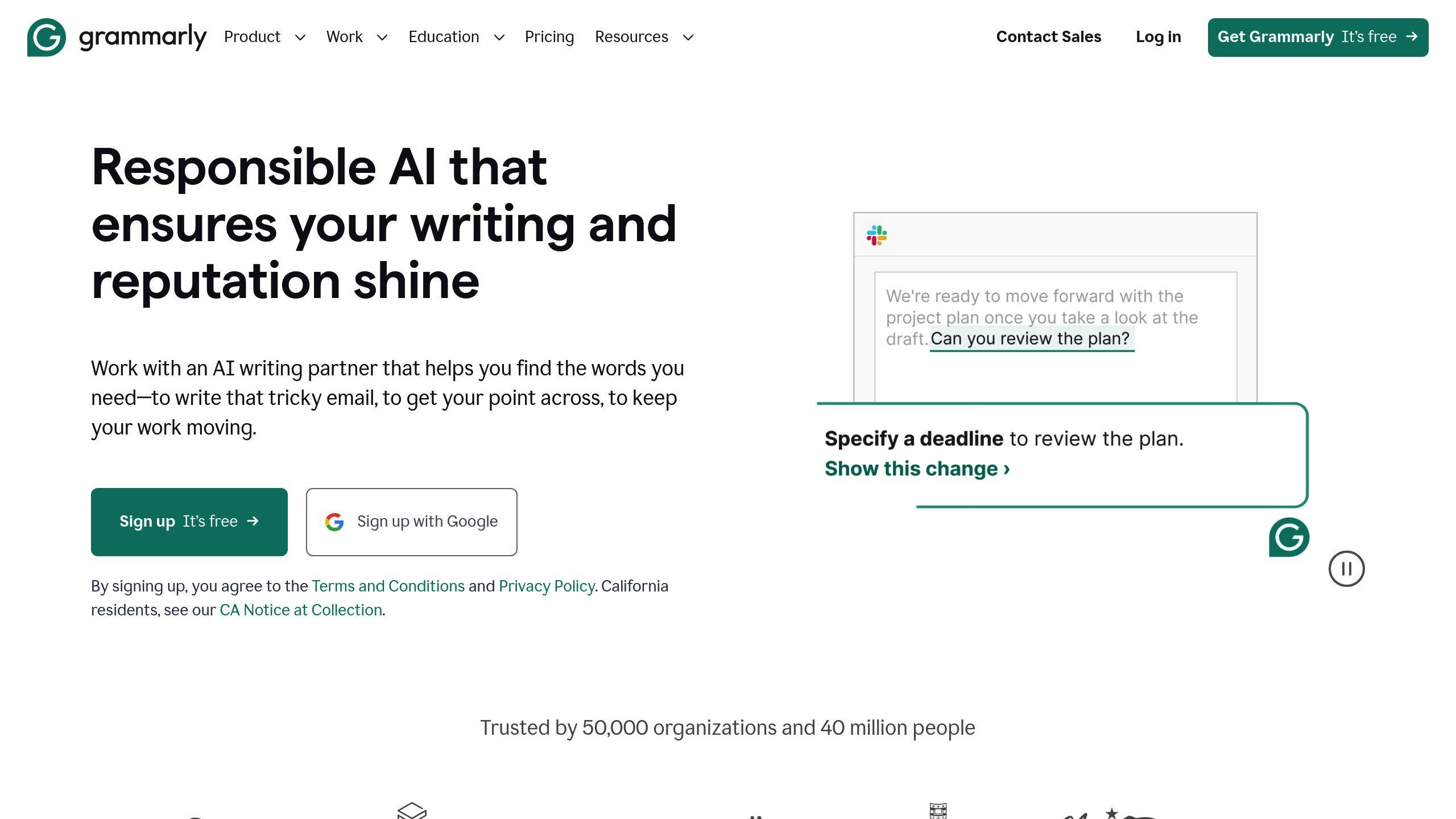
Grammarly boosts conversions by smartly using ad extensions to create multiple ways for users to interact with a single ad. These extensions not only make their ads stand out but also guide users toward specific actions, leading to up to 20% higher click-through rates compared to ads without extensions.
They focus on four main types of ad extensions to achieve these results:
| Extension Type | How It's Used | Impact |
|---|---|---|
| Sitelink Extensions | Links to the free trial page to encourage sign-ups | 15% increase in conversions |
| Callout Extensions | Highlights like "Premium Features" and "Real-Time Suggestions" | Better click engagement |
| Structured Snippets | Features such as "Grammar Check" and "Plagiarism Detection" | Greater feature visibility |
| Call Extensions | Direct access to support for premium users | Improved customer satisfaction |
In late 2024, Grammarly added dynamic sitelink extensions, tailoring ads to match user intent. This boosted relevance and made calls-to-action like "Start Writing Better Now" even more effective, encouraging immediate user engagement and clear conversion paths.
Grammarly keeps refining its ad extensions with performance tracking, A/B testing, and updates for seasonal trends. If you're looking to apply similar strategies, tools from the Top PPC Marketing Directory can help you manage and optimize your own ad extensions.
This approach proves that well-thought-out ad extensions do more than just improve visibility - they create multiple opportunities for users to convert. Grammarly’s success shows how small, targeted changes can lead to impressive results, much like Slack’s effective use of business solution ads.
5. Slack: Direct Business Solutions Ads
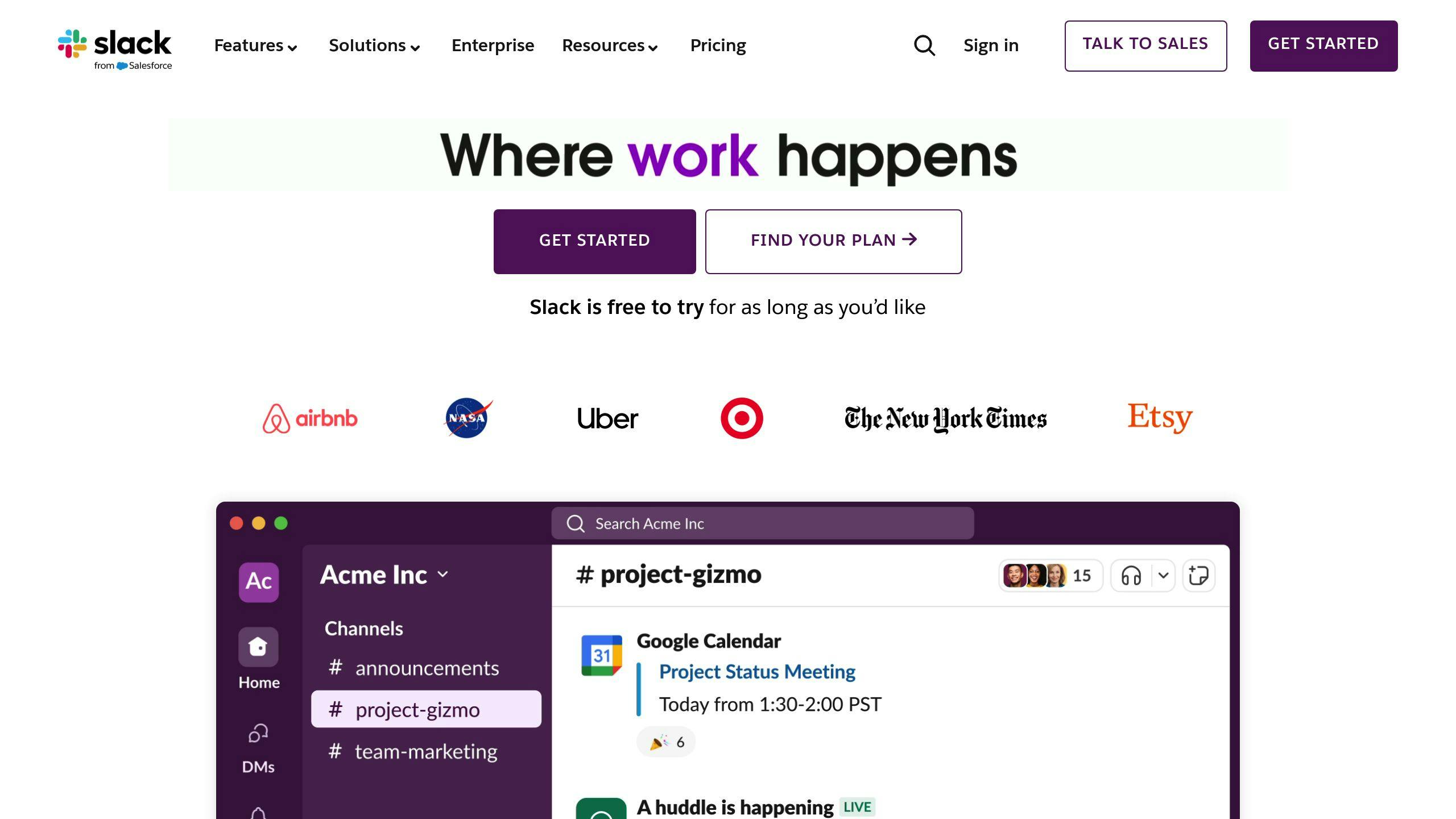
Slack's Google Ads effectively convert by tackling common business challenges in team communication and collaboration head-on.
Their top-performing ad campaigns from late 2024 include three standout strategies:
| Component | Strategy | Impact |
|---|---|---|
| Targeted Keywords | Focused on long-tail phrases like "team collaboration software" and "business communication tools" | Boosts relevance scores and lowers cost per click |
| Solution-Based Headlines | Clear, direct headlines addressing business needs (e.g., "Reduce Email Overload") | Drives higher click-through rates |
| Action-Driven Extensions | Multiple calls-to-action like "Start Free Trial" and "See Pricing Plans" | Creates more opportunities for conversions |
Slack's ad copy zeroes in on business results, such as "streamlined team communication" and "shorter meeting times", instead of technical jargon. The messaging flows seamlessly from their ads to their landing pages, which offer immediate value like free trials. This consistency is key to their high-quality scores on Google Ads.
What sets Slack apart is their use of language that speaks directly to businesses. They focus on real-world use cases and outcomes, as highlighted in their approach:
"Our ads perform better when we focus on concrete outcomes rather than abstract benefits."
To stay ahead, Slack employs advanced analytics tools from the Top PPC Marketing Directory to track performance and refine ad spend. Their method shows that successful B2B advertising hinges on clarity, relevance, and understanding the specific needs of businesses.
Interestingly, this approach aligns closely with Shopify's tactic of using trial-focused keywords to bring in new users.
sbb-itb-89b8f36
6. Shopify: Trial Offer Keywords
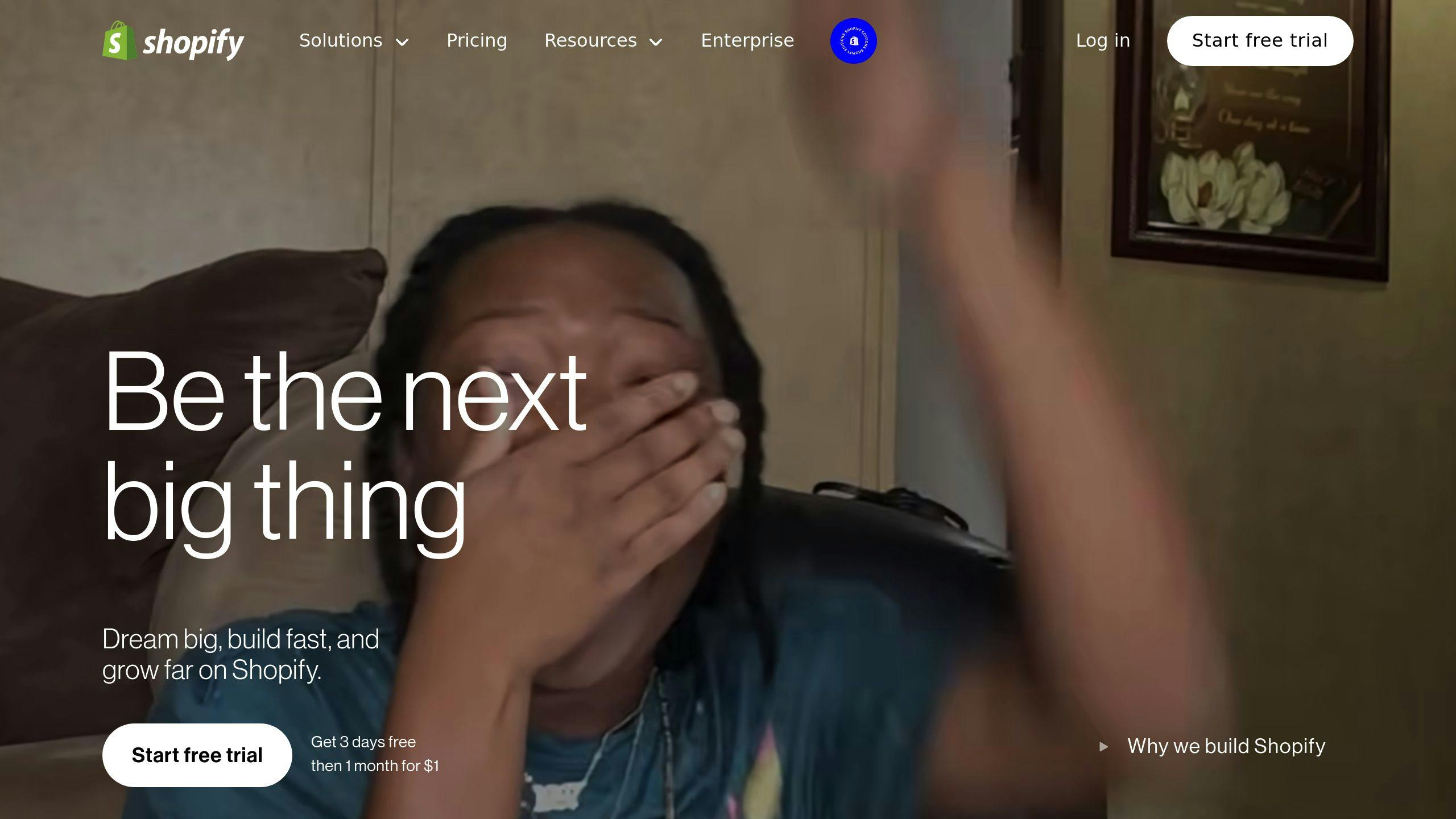
Shopify's success with Google Ads lies in their sharp focus on trial offer keywords. Their strategy blends precise keyword targeting with persuasive ad copy designed to boost conversions.
According to their 2024 campaign data, Shopify builds its keyword approach around three main groups:
| Keyword Category | Example & Impact |
|---|---|
| Direct Trial Terms | Keywords like 'shopify free trial' drive a 42% higher click-through rate (CTR) by appealing to users ready to take action. |
| Problem-Solution | Phrases like 'how to start online store' lower cost per conversion by 35% by aligning with user intent. |
| Competitor-Based | Keywords such as '[competitor name] alternative trial' achieve a 28% higher conversion rate compared to general competitor ads. |
Their most effective campaigns ensure keywords match user searches while highlighting their trial offer consistently. A winning headline format they use is: "Start Your Free Shopify Trial - No Credit Card Required". This is paired with descriptions that emphasize key benefits.
A standout element of Shopify's strategy is their attention to keyword relevance scoring. As AdRoll explains:
"A high score not only means you have good ad copy, but it also reduces ad costs and increases ad exposure thanks to better positioning in Google's search and display networks."
To keep their campaigns performing at a high level, Shopify employs tactics like:
- Regularly refining keyword performance based on conversion data.
- Leveraging tracking tools to analyze keyword results.
- Using Customer Match for targeted audience engagement.
7. HubSpot: Free Resource Promotion
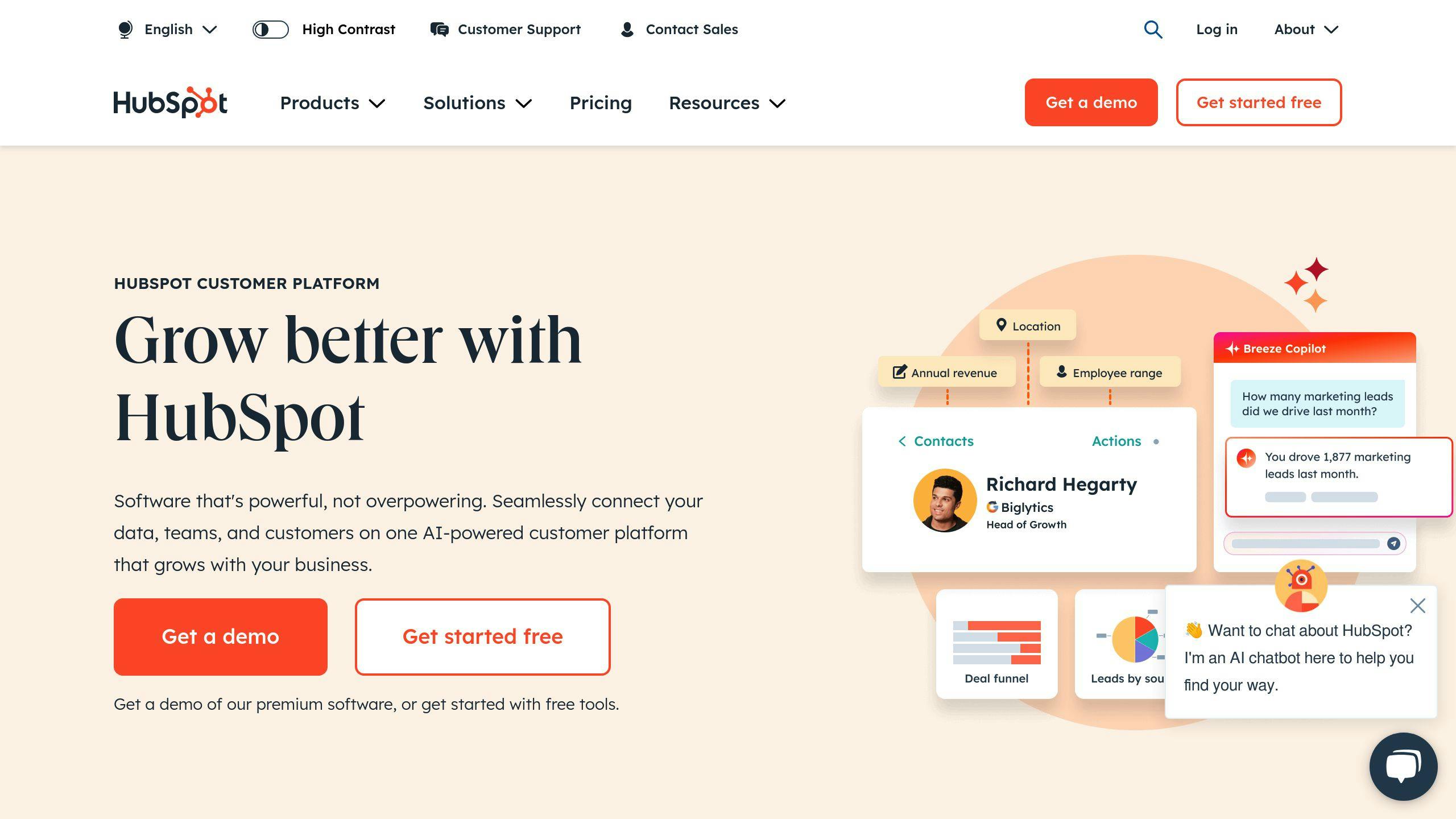
HubSpot's success with Google Ads comes from promoting free educational resources that meet user needs head-on. They focus on three types of resources that consistently perform well: industry reports and ebooks (which see a 42% higher click-through rate), free tools and templates (which lower cost-per-click by 35%), and educational webinars (which boost conversion rates by 28%).
Their ads highlight both the "free" aspect and the specific value offered. For example, headlines like "Free Marketing Template to Boost Your Campaigns" are clear, direct, and effective. By pairing these ads with targeted keywords and landing pages that align perfectly with the offer, HubSpot achieves strong, measurable results.
Internal data reveals that companies adopting this content-focused strategy generate "4.5 times more leads than those relying on traditional advertising methods" [5]. This success hinges on three main factors:
| Component | Strategy | Impact |
|---|---|---|
| Resource Value | Offers immediate, practical benefits | Drives higher engagement |
| Landing Page Alignment | Previews of resources and simple forms | Boosts conversion rates |
| Trust Building | Highlights download numbers and testimonials | Strengthens credibility |
"By offering high-quality and valuable resources, HubSpot builds trust and establishes itself as an authority in the industry, increasing the likelihood of converting visitors into leads."
HubSpot ensures their campaigns maintain high quality scores by using precise keyword targeting, well-optimized landing pages, and ad copy that clearly communicates value. This approach not only improves conversions but also cuts acquisition costs by prioritizing trust and value-first marketing.
Their resource-focused strategy shows how delivering upfront value can build trust and drive results - a principle that’s also seen in Tesla’s limited-time pre-order campaigns.
8. Tesla: Limited-Time Pre-Orders
Tesla's Google Ads campaigns show how using exclusivity and urgency can drive pre-orders in competitive markets. By highlighting limited availability and special access, Tesla motivates potential customers to act fast.
Their ads feature headlines like "Pre-Order Now: Exclusive Access to the New Tesla Model", blending exclusivity with time sensitivity. This strategy has helped Tesla outperform the automotive sector's average e-commerce conversion rate of 1.84%.
Tesla's landing pages are carefully aligned with their ad messaging. They include clear product details, upfront pricing, and simple pre-order forms. This seamless experience reduces barriers and turns interest into actual pre-orders.
"By creating a sense of urgency, Tesla's scarcity messaging can significantly increase conversion rates as potential customers are motivated to place orders before the offer expires."
The campaign structure ensures the messaging aligns with customer expectations, using urgency and exclusivity to drive action. If you're looking to replicate this strategy, tools from the Top PPC Marketing Directory can help with features like advanced bid management and A/B testing.
Tesla's focus on exclusivity for physical products mirrors how companies like Skillshare use urgency to market educational content and attract new users.
9. Skillshare: New User Discount Ads
Skillshare runs highly effective Google Ads campaigns by combining time-sensitive deals with clear benefits, making them a strong player in the competitive e-learning space. One of their standout promotions is the "50% off annual membership" offer, which cuts the regular $168 yearly fee to just $83.94. Their ads grab attention with headlines like "Learn Creative Skills | 50% Off Annual Premium" and descriptions that highlight value, such as "Join 30,000+ Classes for $7/Month", paired with direct calls-to-action like "Start Learning Now."
During peak periods, such as Black Friday, these campaigns deliver impressive results. For instance, click-through rates surged by 63% compared to standard campaigns. Their mobile app also saw a 15% increase in click-through rates after introducing personalized ad targeting.
Skillshare’s strategy revolves around layering offers to attract and retain users:
| Offer Type | Discount | Purpose |
|---|---|---|
| Trial Offer | 100% Free | Lower entry barriers |
| New User Discount | 40-50% Off | Encourage long-term use |
The combination of free trials and substantial first-year discounts has proven to be a winning formula for boosting conversions. Skillshare ensures their pricing is transparent and uses limited-time offers to create urgency, all while steering clear of tactics that might feel overly pushy.
Marketers aiming to replicate this approach can benefit from tools like those featured in the Top PPC Marketing Directory. These tools help fine-tune bid strategies and run A/B tests to optimize discount-driven campaigns. The trick lies in offering deals that are enticing yet sustainable for customer acquisition.
Skillshare’s success underscores the power of blending urgency with clear benefits - a strategy also reflected in Monday.com's creative use of image-based ad testing.
10. Monday.com: Image-Based Ad Tests
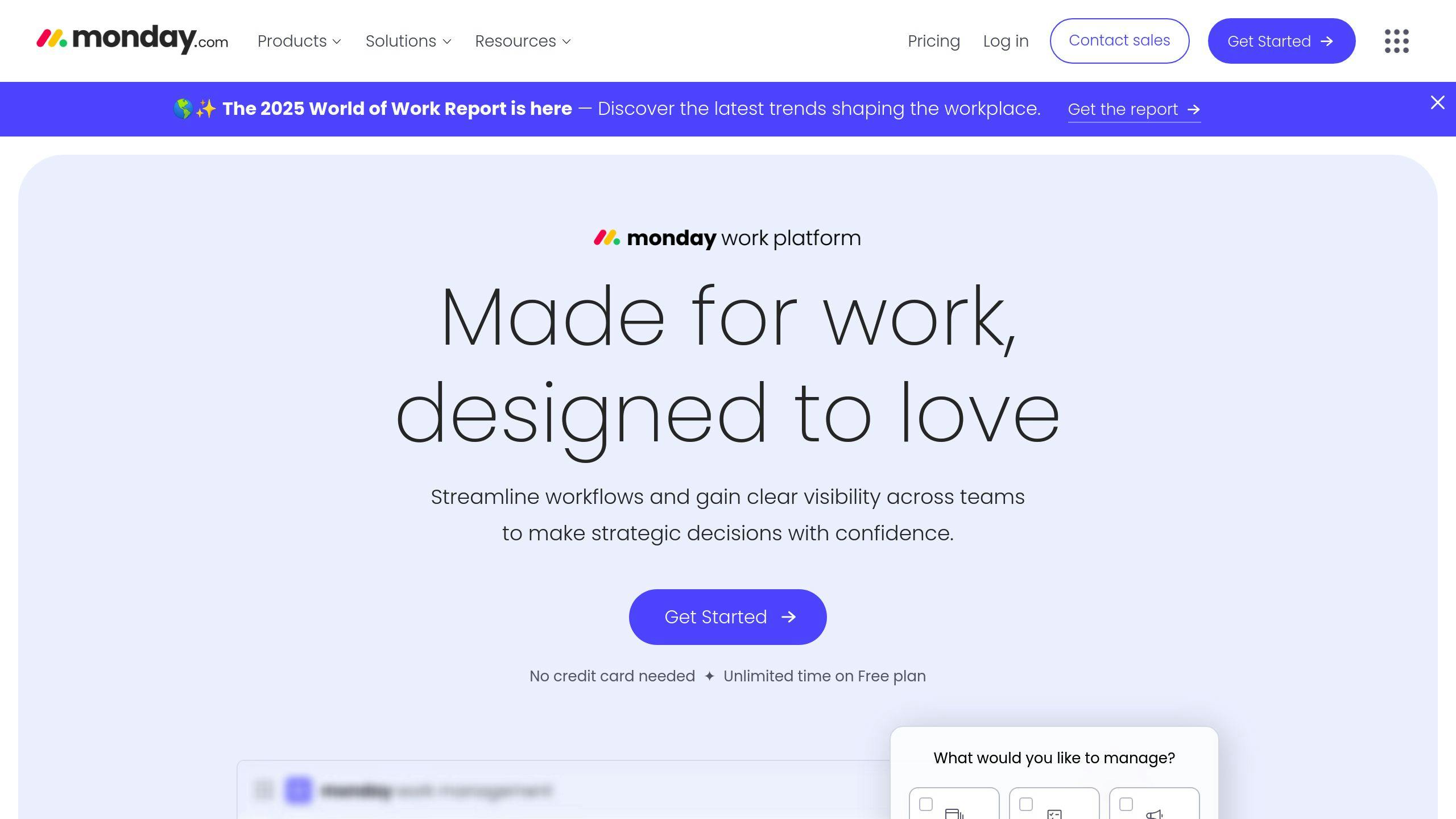
Monday.com shows how visuals can drive results in B2B marketing. Their image-based ad strategy focuses on three main elements:
| Visual Element | Purpose | Impact |
|---|---|---|
| Dynamic GIF Ads | Highlight product transformation | Boosted engagement by 47% |
| Infographic Images | Show before/after scenarios | 32% higher CTR than text ads |
| Platform Screenshots | Offer a product preview | 28% rise in conversion rates |
In 2020/21, Monday.com invested $200 million in visual marketing, proving that well-crafted visuals paired with minimal text can deliver powerful results.
"We always aim to serve a user with a product-focused campaign later down the line, so both channels enhance the other", says Aviv Bar Oz, Brand Marketing Professional Lead at Monday.com.
Their multi-channel strategy uses these visuals across platforms, with YouTube campaigns standing out as a prime example of how effective a visual-first approach can be. Through A/B testing, they fine-tune their ads by comparing engagement rates for animated vs. static visuals and tracking conversion rates for product screenshots.
Monday.com also adapts its visuals for local markets while keeping brand consistency. For instance, a Berlin campaign combined digital ads with out-of-home displays, testing different visuals to find what resonated most with the audience.
Their commitment to optimization has paid off, earning them a 4.5 out of 5 user review score on Gartner Peer Insights. This approach aligns their ad messaging with actual user experiences, echoing the success factors of top-performing Google Ads campaigns, like precise targeting and constant testing.
Monday.com’s results highlight how refining creative elements can elevate ad performance across platforms.
Shared Success Factors
The best-performing ads share a set of strategies that any advertiser can use to improve their campaigns. These methods provide a strong base for crafting successful paid search efforts.
| Success Factor | Implementation | Impact |
|---|---|---|
| Strategic Targeting | Location-based, retargeting, demographic segmentation | 47% higher engagement rates |
| Ad Extensions | Callouts, sitelinks, structured snippets | 32% increase in click-through rates |
| Testing Framework | A/B testing, ad scheduling, copy variations | 28% improvement in conversion rates |
Targeting with precision is key to driving engagement. By refining keyword lists to match search intent, advertisers can improve Quality Scores and lower CPC. This tactic is especially effective for commercial intent keywords, where nearly two-thirds of clicks go to paid results [4].
Using multiple ad extensions enhances ad visibility and relevance. These additions, like callouts and structured snippets, outperform plain text ads by providing users with more useful details and actionable links [2].
"Understanding search intent - whether informational, navigational, transactional, or commercial - is crucial for creating content that meets users' needs", says Sarah Chen, a Google Ads expert featured in the Top PPC Marketing Directory.
Timing matters too. Scheduling ads during peak engagement hours, alongside ongoing performance tracking, ensures maximum conversions while keeping costs under control [2].
Top advertisers also focus on:
- Monitoring search term performance to find high-converting keywords
- Testing various ad copy to boost engagement
- Adjusting bids based on conversion data
- Retargeting past visitors to bring them back
Consistency between ad messaging and landing page content is another critical element. This alignment creates a smooth user journey, which supports conversion goals. When paired with retargeting, these campaigns often achieve much higher conversion rates than standalone strategies [4].
Finally, A/B testing plays a big role in campaign success. By experimenting with different elements, advertisers can pinpoint what works best and continuously refine their approach [2].
Steps to Build Better Google Ads
Creating effective Google Ads campaigns involves a clear, step-by-step approach that focuses on the factors driving performance. Here's how to set up ads that convert.
Start with precise targeting by using tools like Google's Keyword Planner to conduct detailed keyword research. Focus on long-tail keywords - they often show higher intent to convert. Choose keywords that reflect commercial intent to attract traffic that's more likely to take action.
To organize your campaign, group related keywords into tightly focused ad groups. This structure ensures your ads stay relevant to search terms, which directly impacts your Quality Score - a key factor in improving your campaign's performance.
| Campaign Element | Best Practice | Expected Impact |
|---|---|---|
| Keyword Match Types | Start broad, refine to exact | 25-40% CPC reduction |
| Ad Extensions | Use 4+ extensions per ad | 32% higher CTR |
| Mobile Optimization | Create separate mobile campaigns | Higher engagement |
| Landing Page Load Time | Keep it under 3 seconds | 29% lower bounce rate |
Write compelling ad copy by including specific numbers and urgency-driven offers. Phrases that create urgency, paired with clear and honest messaging, can push users to take action and improve overall results.
Set up conversion tracking to measure campaign performance accurately. Track both primary conversions (like purchases) and secondary ones (like form submissions) to fine-tune your bidding and identify what’s working best.
For landing page optimization, make sure the page matches the promises in your ad. A seamless experience from ad to landing page builds trust and boosts conversions. Adding performance metrics - like "98% of users recommend us" - can also encourage users to take action.
Leverage Smart Bidding to automate certain tasks while keeping control over key elements. Start with Target CPA bidding once you’ve gathered at least 30 conversions within 30 days. This gives the system enough data to optimize effectively.
If performance varies significantly across devices, create device-specific campaigns. For example, mobile campaigns often require unique messaging and bidding strategies to maximize engagement.
Finally, use advanced tools for campaign management, bid adjustments, and tracking performance. Explore platforms listed in the Top PPC Marketing Directory to simplify optimization while focusing on the metrics that matter most.
Shopify’s trial-based ads and HubSpot’s resource promotions are great examples of how these strategies work in action. By applying these methods, you can create campaigns that consistently deliver strong conversion rates and measurable results.
Conclusion
Looking at these high-performing Google Ads examples, one thing becomes clear: success hinges on smart testing and a focus on data. By following these tactics, you can achieve similar results.
To get the most out of your Google Ads, set aside part of your budget for A/B testing. Let your experiments run long enough to collect reliable data - this is how you pinpoint the ad elements that truly connect with your audience. Big names like Nike and Amazon show that consistent testing and refinement can lead to impressive outcomes.
"PPC ads deliver measurable results by allowing real-time control over spend, targeting, and creative."
Make sure your tests run long enough to gather meaningful insights - this often means a few weeks with enough clicks to analyze. Regular reviews and bold experiments can reveal new opportunities in your campaigns. Stay methodical and focus on metrics that align with your business goals.


